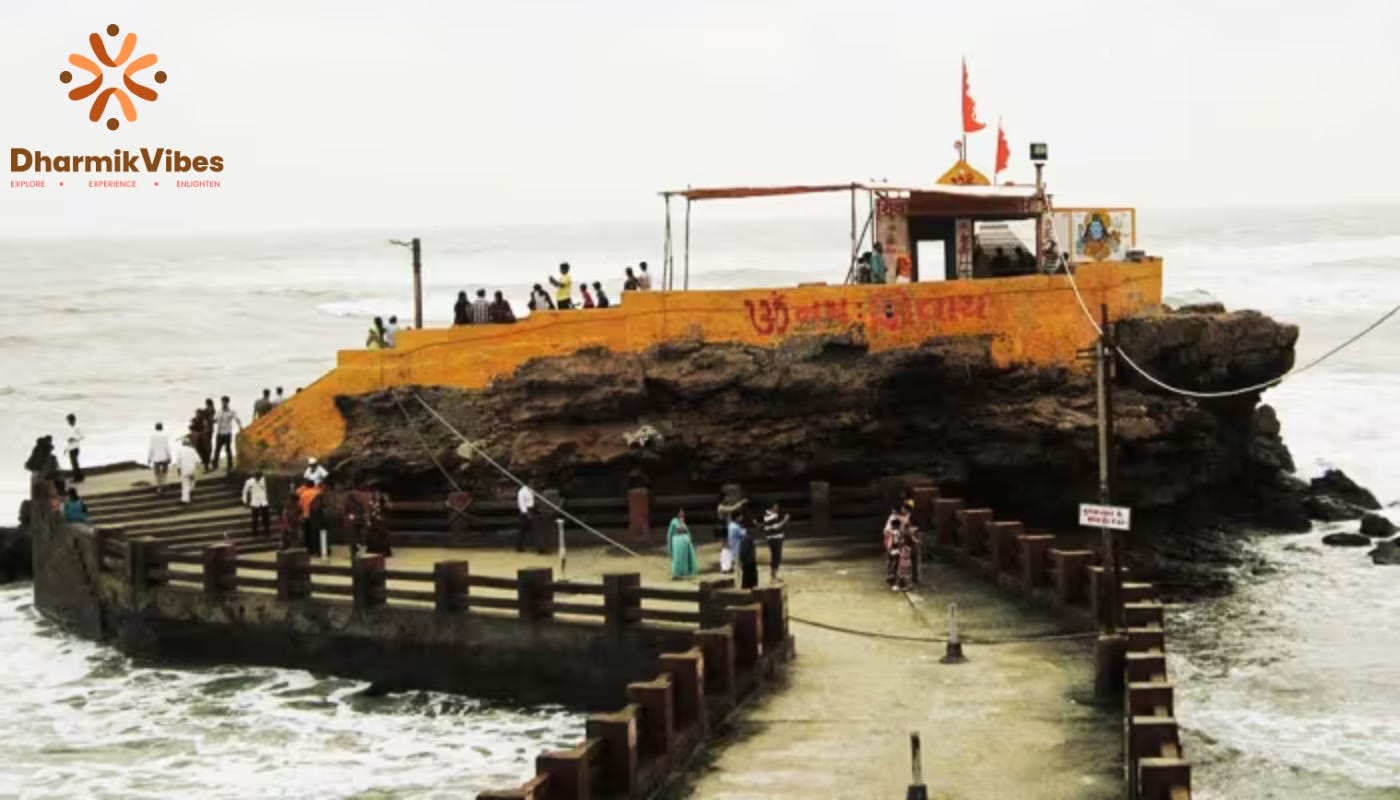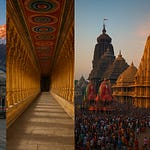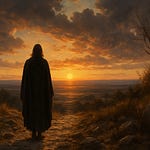🕉️
Tucked away on the western shores of India, in the sacred town of Dwarka, Gujarat, stands Bhadkeshwar Mahadev Temple — a humble yet powerful shrine of Lord Shiva. Unlike other grand temples, this one holds its glory through nature’s devotion: the Arabian Sea itself performs daily Abhishekam (sacred bathing) of the Shivling during high tides.
It is a place where time, tide, and divinity converge in the most magical form.
📜 Mythological & Historical Background
🔸 Mythological Legends:
According to local legends, the Shivlinga at Bhadkeshwar emerged on its own (Swayambhu), discovered centuries ago by a local sage while meditating near Chakratirth Beach.
It is believed that Lord Shiva himself manifested here to bless devotees in Dwarka, the city of Lord Krishna — symbolizing the divine unity of Shaivism and Vaishnavism.
Another belief is that this place was once a site of deep penance performed by sages, and Lord Shiva appeared here to grant them boons.
🔸 Association with Lord Krishna:
Dwarka is known as the kingdom of Lord Krishna, and Bhadkeshwar symbolizes the cosmic harmony between Vishnu and Shiva.
Krishna himself is believed to have worshipped Shiva at this very spot to seek blessings before the Kurukshetra war.
🔸 Historical Insight:
Though not mentioned in mainstream historical records, Bhadkeshwar Mahadev has been part of oral traditions and regional folklore for over a thousand years.
Locals believe the temple existed even during the Dwarka kingdom era, and withstood numerous natural calamities and sea erosions.
🔱 Spiritual Significance
The temple is believed to be self-manifested and eternally protected by the five elements of nature — Earth, Water, Fire, Air, and Sky.
The daily submergence of the Shivlinga by sea water is interpreted as the ocean offering its devotion to Lord Shiva.
It is said that merely visiting the temple with a pure heart and witnessing the sea abhishekam cleanses one's sins and karmic blockages.
Many seekers claim to experience peace, deep meditation states, and visions at this spot, especially during sunrise and sunset.
It's also believed that this is one of the 108 sacred Shiva kshetras spread across India, though it's not formally listed in the Puranic texts.
🙏 Religious Importance
Devotees across Gujarat and western India consider Bhadkeshwar a powerful Jyotirlinga-like shrine, despite it not being one of the 12 official Jyotirlingas.
Shaivite saints often include this temple in their pilgrimage circuits.
Local fishermen and sailors also revere this temple as a protector of the sea, and offer coconuts and incense before setting out for long journeys.
🛕 Temple Architecture
The temple is built on a natural rock formation in the Arabian Sea, accessible via a narrow walkway from the shore.
The shrine has a single sanctum housing the Shivlinga, surrounded by a low platform used for circumambulation (Parikrama).
It’s a minimalistic stone structure, built to withstand high tides and sea winds, yet exudes immense spiritual energy.
On stormy days or during full moon tides, the entire temple submerges, and only emerges after the water recedes — unharmed and glowing.
🪔 Rituals, Worship & Aarti
🕯️ Daily Puja:
Morning Abhishekam with milk, honey, ghee, and gangajal.
Offering of bel leaves, datura flowers, and rudraksha beads.
Recitation of Shiva Tandava Stotram, Maha Mrityunjaya Mantra, and Rudri Path.
🕯️ Aarti Timings:
Morning Aarti: 6:30 AM
Evening Aarti: 7:00 PM (at sunset, often coinciding with sea breeze and twilight)
Special devotional songs (bhajans) are sung every Monday and on festival days.
🔮 Special Pujas:
Shravan Maas (July–August): Daily Rudrabhishekam, Maha Mrityunjaya Jaap.
Maha Shivratri: Night-long Jagran, Yagna, and Bhajan Sandhya.
Pradosh Vrat: Special puja on Trayodashi evenings.
📅 Festivals Celebrated
Maha Shivratri: The most celebrated festival, with thousands of devotees walking barefoot to the temple.
Shravan Month: Considered extremely auspicious. Pilgrims perform Jalabhishek and chant mantras.
Kartik Purnima & Guru Purnima: Known for spiritual gatherings and satsangs.
Somvati Amavasya: Special bathing and worship ritual.
🧘 Experiencing the Temple
Early mornings are ideal for meditation by the sea.
Sunset is a perfect time to witness spiritual tranquility, with chants blending into ocean waves.
During high tide, devotees stand at a distance and chant mantras, watching the sea cover the Shivlinga — an emotional, surreal moment.
🧭 How to Reach Bhadkeshwar Mahadev Temple
By Train: Dwarka Railway Station (Approx. 2.5 km)
By Air: Jamnagar Airport (~130 km), connected to major Indian cities
By Road: Well-connected by buses and taxis from Rajkot, Somnath, Ahmedabad
Local Commute: Rickshaws, local taxis; ample parking available near the beach
🧳 Travel & Visitor Information
Timings: 6:00 AM to 9:00 PM daily
Entry Fee: None
Best Time to Visit: October to March; or during Maha Shivratri and Shravan month
Nearby Places: Dwarkadhish Temple, Rukmini Devi Temple, Gomti Ghat, Sudama Setu, Bet Dwarka, Nageshwar Jyotirlinga
⚠️ Traveler Tips
During high tide, the temple may be closed for safety — check tide timings.
Carry water, slippers, and a light shawl if you plan to meditate.
Avoid monsoon season if you prefer calm sea experiences.
Photography is allowed but respect rituals and devotees.
🌺
Bhadkeshwar Mahadev Temple is not just a temple — it is a living miracle. A place where nature surrenders to divinity, where the ocean becomes a priest, and the winds carry mantras. It is a reminder that the supreme power is ever-present, ever-pure, and ever-loving — manifesting in the humblest of shrines with the grandest of devotion.
If you're visiting Dwarka or walking the path of spirituality, Bhadkeshwar is not to be missed.











